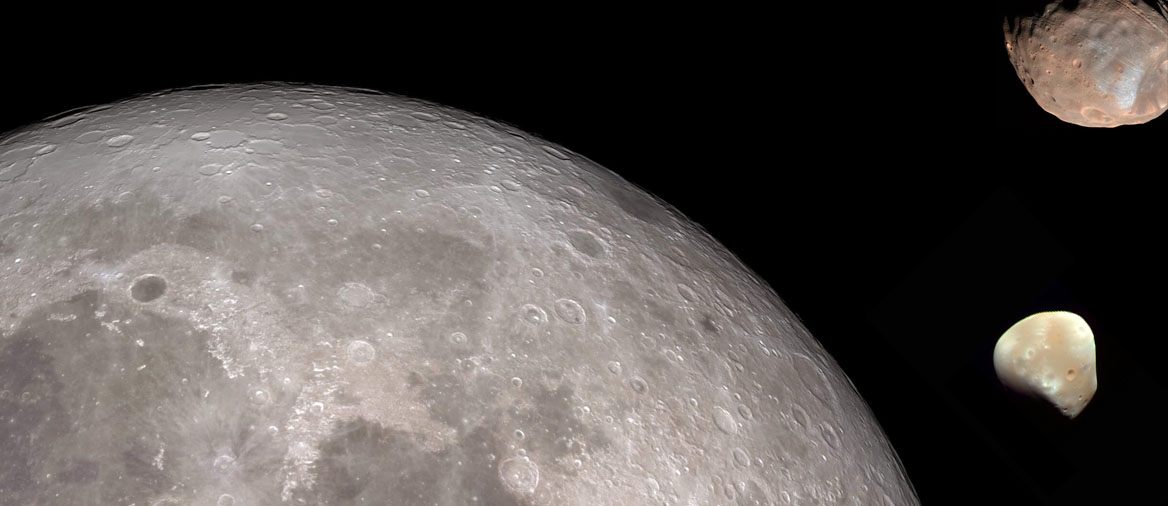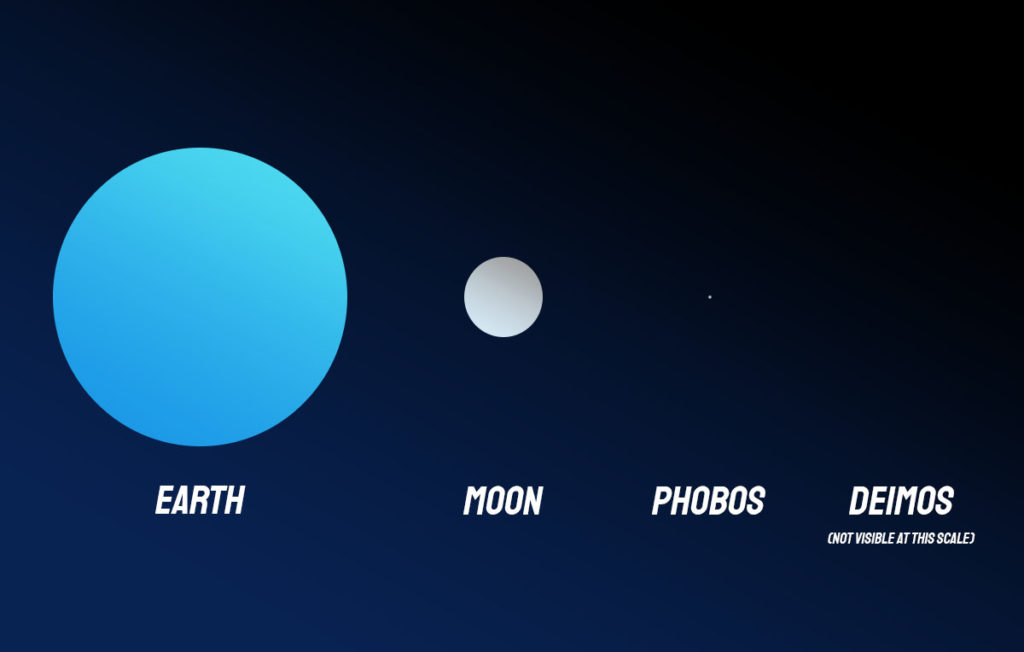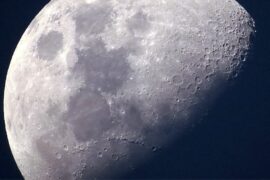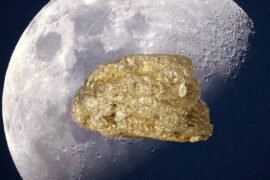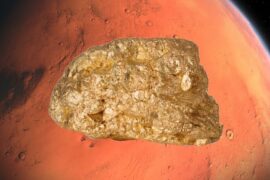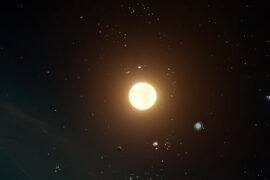Our neighboring planet, Mars, has two moons orbiting around it just like our Moon orbits around Earth. But how do they compare to each other? what are their differences and similarities?
A moon is the common name we give to astronomical objects of a relatively big size that orbit around a planet. In reality, only our Moon should be referred to as such, while the ones on other planets should be called natural satellites, but let’s face it, that’s just too many words, so for convenience sake, we are going to refer to them as moons as well.
The lines for what are the lower and upper limits in terms of size for what is a moon are not clearly defined. There are certain asteroids orbiting around planets the could be considered moons, while there are moons that are too big and could be considered dwarf planets. For example, some people believe that Charion, an object orbiting around Pluto, could be considered a dwarf planet and the system should be a binary planet instead of a dwarf planet-moon.
For Mars, the scientific consensus is that it has two planets: Phobos and Deimos, named after the Greek gods of fear and dread respectively.
Phobos, Deimos and the Moon comparison
The following fact sheet compares the characteristics of both of Mars’ moons and the Moon.
| Moon | Phobos | Deimos | |
| Periapsis | 362,600 km | 9,234 km | 23,455 km |
| Apoapsis | 405,400 km | 9,517 km | 23,471 km |
| Orbital period | 27.3 days | 0.31 days | 1.26 days |
| Orbital speed | 1.02 km/s | 2.14 km/s | 1.35 km/s |
| Radius (avg) | 1737.4 km | 11.26 km | 6.2 km |
| Surface area | 3.793×107 km2 | 1,548.3 km2 | 495.15 km2 |
| Volume | 2.2×1010 km3 | 5,783.6 km3 | 999.8 km3 |
| Mass | 7.342×1022 kg | 1.066×1016 kg | 1.476×1015 kg |
| Density (avg) | 3.34 g/cm3 | 1.876 g/cm3 | 1.47 g/cm3 |
| Surface gravity | 1.62 m/s2 | 0.0057 m/s2 | 0.003 m/s2 |
| Escape velocity | 2.38 km/s | 0.01139 km/s | 0.05556 km/s |
| Temperature | 140 °C to −171 °C | −4 °C to −112 °C | -40 °C |
| Apparent magnitude | −2.5 to −12.9 | 11.8 | 12.89 |
Some clarifications on the meaning of some of these stats:
Periapsis: The nearest point in the orbit of the moon in relation to its planet
Apoapsis: The farthest point in the orbit of the moon in relation to its planet
Orbital period: The times it takes for the moon to orbit its planet
Density: Quantity of mass per unit volume
Apparent magnitude: “Brightness” of the object as seen from Earth
Similarities between the Moon, Phobos, and Deimos
- All three objects are natural satellites to their respective planets
- The Moon, Phobos, and Deimos all have lots of craters from asteroid impacts due to not having an atmosphere. Deimos has the least craters out of the 3 due to its smaller size.
- The exact origin for all 3 moons is still unknown
- None of the moons have the capacity to support the existence of liquid water. But the Moon and Phobos do seem to have ice.
- The Moon, Phobos and Deimos orbit their planets in the same direction
- The three moons have been considered as part of plans for space exploration. The Moon could hold launch bases and telescopes, and both Phobos and Deimos could be used as a stopover on manned missions to Mars.
- Phobos, Deimos, and the Moon are all tidally locked to their planets. This means their rotation period coincides with their orbit around the planet. This is why we only see one side of the Moon from Earth.
- The Moon and Deimos are both on orbits that are moving them away from their planet.
Differences between the Moon, Phobos, and Deimos
- The Moon is 155 times bigger than Phobos and 280 times bigger than Deimos
- Phobos is almost twice as big as Deimos
- The Moon has an atmosphere (a very weak one). Phobos and Deimos are too small to hold one.
- The Moon has a spherical shape. Phobos and Deimos are more irregularly shaped.
- The prevaling theory for the Moon creation is that it was created after Earth collided with a Mars-sized object in it’s early days. The prevailing theory for the creation of Phobos and Deimos is that they were asteroids from the asteroid belt that were captured by Mars gravity.
- The Moon is believed to have an iron core. Both of Mars’ satellites are unlikely to have a metallic core.
- The surface of Phobos and Deimos is made of carbonaceous chondrite. The surface of the Moon is made mostly of of silica, alumina, lime, and iron.
- The Moon has a (very weak) magnetic field. Mars’ satellites do not appear have one.
- Phobos, contrary to Deimos and the Moon, is moving closer to Mars. This means that in 30-50 millions it will collide with the red planet or break up to form a ring like the ones in Saturn.
- Phobos and Deimos are too small to create total solar eclipses like the Moon does on Earth. In fact, the partial solar eclipses created by these satellites only last for a few seconds.

